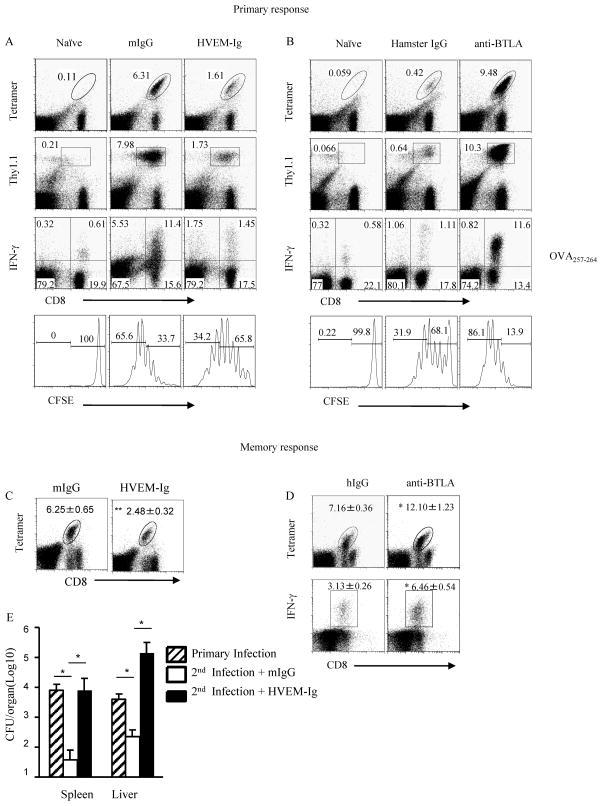Figure 1.
BTLA inhibits bacteria-specific CD8+ effector and memory T cell responses. A) CFSE-labeled pooled splenocytes and LN cells isolated from OTI/Thy1.1 mice (2×107 cells) were adoptively transferred into WT Thy1.2+ mice, and the recipients were immunized with 5×105 CFU Listeria-OVA and treated with 200 μg HVEM-Ig or mIgG as control. Seven days later, splenocytes were isolated and Thy1.1+ CD8+ OVA -tetramer+ cells and intracellular IFNγ were analyzed by flow cytometry. B) CFSE-labeled pooled splenocytes and LN cells isolated from OTI/Thy1.1 mice (2×107 cells) were adoptively transferred into WT mice, and the recipients were immunized with low dosage 1×105 CFU Listeria-OVA and treated with 200 μg anti-BTLA (6A6) or hamster IgG. Seven days later, splenocytes were isolated and Thy1.1+ CD8+ OVA-tetramer+ cells and intracellular IFNγ were analyzed by flow cytometry. C) WT mice were primarily infected i.p. with 1×104 CFU Listeria-OVA. Two months later, mice were re-challenged with 5×106 CFU Listeria-OVA and treated with 200 μg HVEM-Ig or mIgG (C), Hamster Ig or anti-BTLA (6A6) Ab (D). Six days later, splenocytes were isolated and endogenous CD8+ OVA -tetramer+ cells and intracellular IFNγ were analyzed by flow cytometry. E) Same as in C, three days after rechallenge the bacteria burden in the spleen and liver was tested. The results are representative of three independent experiments, four to five mice in each group and data are represented as mean +/− SEM. See also Figure S1.

